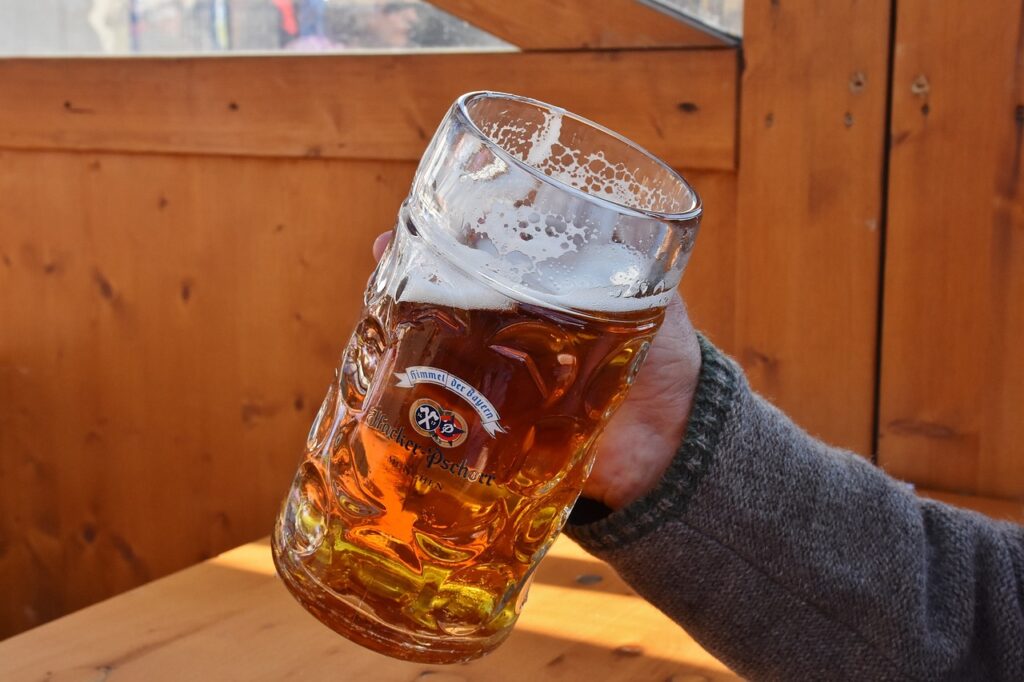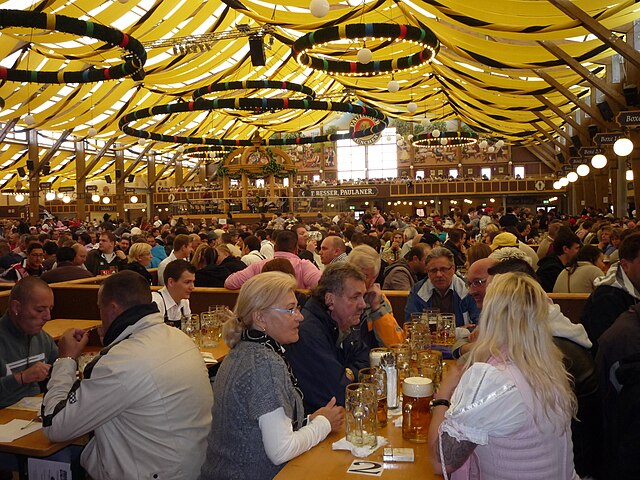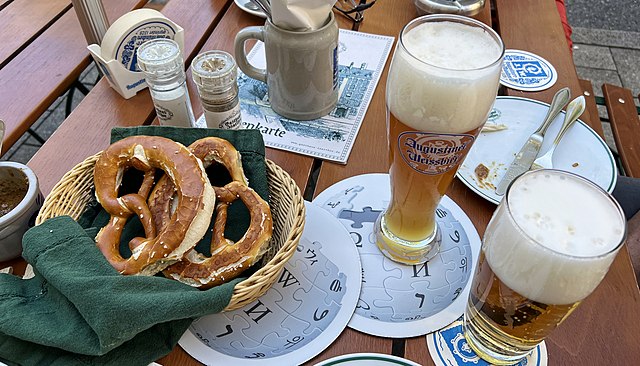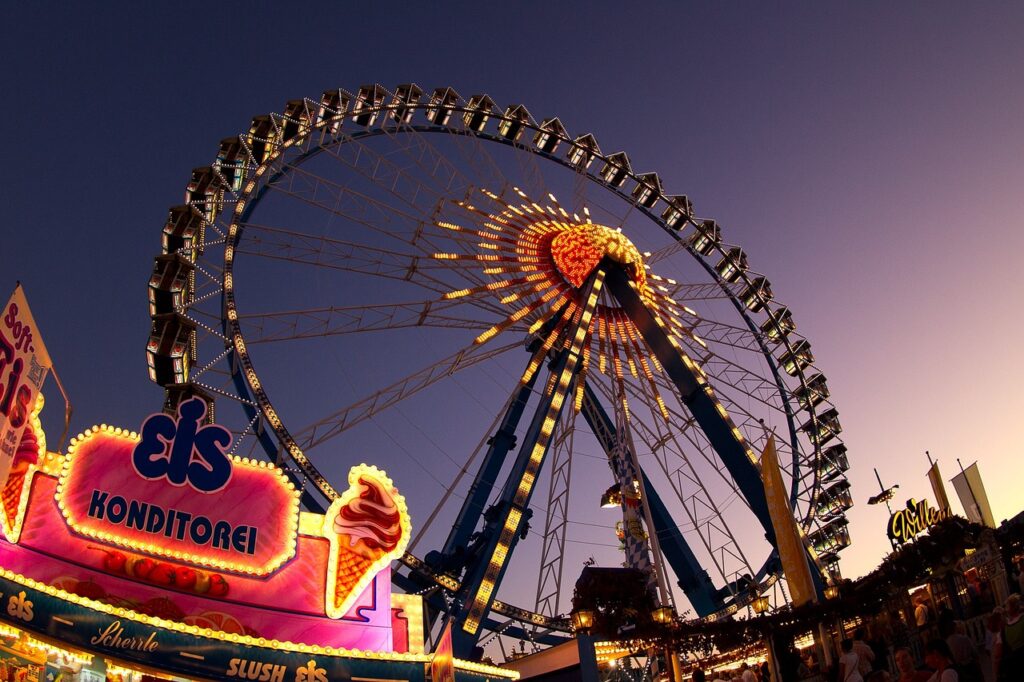
Oktoberfest Facts and History – A Captivating Journey to Munich
Oktoberfest, a place where the fusion of merriment and long-held customs creates an unforgettable experience. Nestled within the vibrant city of Munich, Germany, Oktoberfest emerges as more than just a festival—it stands tall as the planet’s most colossal celebration of beer and amusement. Our journey takes us through a captivating exploration of Oktoberfest facts that define this remarkable event. From its modest beginnings to its far-reaching global impact, Oktoberfest encapsulates a spirit of togetherness and jubilation that traverses both time and borders.
Origins and History
The roots of Oktoberfest can be traced back to a significant and heartwarming event that occurred in 1810, the marriage of King Ludwig I and Princess Therese of Bavaria. The celebration was grand, with horse races and communal feasts, and it took place in an open area just outside the city gates of Munich. The collective joy and unity experienced during this celebration planted the seeds of what would eventually blossom into the Oktoberfest we know today.
As years passed, this festive gathering continued to be held, evolving and expanding in scope. What once began as a single event tied to a royal wedding grew into an annual tradition that united locals and visitors alike. The festival’s location remained constant, solidifying its place on the Theresienwiese—the fields named after Princess Therese. Over time, the event shifted its focus from horse races to include agricultural fairs, performances, and, of course, the central element that has come to define Oktoberfest: beer.
In 1887, the first beer tents operated by local breweries emerged at Oktoberfest, marking a pivotal moment in its history. The festival continued to grow, embracing modernity while preserving its rich heritage. From the incorporation of electric lights in the late 19th century to the suspension of festivities during times of war and economic hardship, Oktoberfest has weathered various challenges, emerging stronger and more cherished with each passing year.
Today, Oktoberfest is not merely a local event—it has transformed into an international phenomenon that attracts millions of visitors from across the globe. This celebration of tradition, community, and, of course, beer, showcases the enduring power of shared experiences and the rich tapestry of history that binds generations together.
Festivities and Traditions
The festival kicks off with a lively and eagerly anticipated opening ceremony. The mayor of Munich performs the ceremonial act of tapping the first beer barrel, officially marking the commencement of the celebrations. This tradition, known as the “O’zapft is!” (meaning “It’s tapped!”), sets the jubilant tone for the entire event.
One cannot mention Oktoberfest without picturing the iconic beer tents that dot the festival grounds. Each tent is unique, with its own distinct atmosphere, entertainment offerings, and, of course, a vast supply of exquisite beer. These tents cater to various tastes, from traditional and cozy to modern and lively, ensuring there’s a spot for everyone to revel in.
As the sun sets, the festival takes on a new form with captivating live music performances. Traditional Bavarian tunes intertwine with modern beats, creating an ambiance that urges visitors to join hands, dance, and revel in the joy of the moment. The festival grounds also feature exhilarating amusement rides, games, and sideshows that appeal to all ages, ensuring that laughter and excitement are in no short supply.
One of the most cherished Oktoberfest traditions is the embrace of traditional Bavarian clothing. Lederhosen and dirndls, the distinctive outfits worn by men and women respectively, add an extra layer of authenticity to the experience. Many visitors choose to don these traditional garments, contributing to the festive spirit while honoring centuries-old customs.

Beer Culture and Consumption
The festival’s commitment to maintaining the highest quality standards when it comes to beer is nothing short of impressive. The beers served at Oktoberfest adhere to the Reinheitsgebot, or the German Beer Purity Law, which dates back to 1516. This law stipulates that beer can only be brewed using four ingredients: water, malt, hops, and yeast. This dedication to tradition ensures that every sip is a testament to the craftsmanship that has been passed down through generations.
The beers most commonly enjoyed at Oktoberfest are Märzen and Festbier. Märzen, named for the month of March, was traditionally brewed in the spring and stored in cool cellars to be enjoyed during the summer months. Festbier, a newer addition, boasts a slightly lighter and more palatable flavor, making it the go-to choice for many attendees.
The sheer volume of beer consumed during Oktoberfest is staggering. It’s not uncommon for over 7 million liters of beer to be enjoyed over the course of the festival. Each beer mug, often adorned with intricate designs, becomes a vessel for camaraderie and connection. The mugs are available in various sizes, with the larger “Mass” mug containing a full liter of beer. This tradition of clinking mugs and offering cheerful “Prost!” to fellow revelers fosters a sense of unity and shared experience.
Navigating the art of beer consumption at Oktoberfest is an adventure in itself. Servers known as “Bierkellner” and “Bierkellnerin” deftly maneuver through the bustling tents, delivering trays laden with beer mugs to eager patrons. The intricate dance between servers and attendees adds to the festivity, creating an atmosphere that’s both convivial and efficient.
Culinary Delights
Oktoberfest offers a culinary journey that delights the taste buds and pays homage to Bavaria’s rich gastronomic heritage. The festival grounds are a treasure trove of flavors, where traditional Bavarian dishes take center stage.
Pretzels, with their golden-brown exteriors and soft interiors, are a quintessential part of the Oktoberfest experience. These doughy delights, often as large as one’s hand, are baked to perfection and sprinkled with coarse salt. Their unmistakable aroma wafts through the air, drawing visitors to indulge in this beloved treat.
Sausages, a staple of Bavarian cuisine, come in various forms at Oktoberfest. From the hearty Bratwurst to the flavorful Weisswurst, these sausages showcase the region’s dedication to quality ingredients and skillful preparation. Served with mustard and freshly baked bread, sausages offer a hearty and satisfying option for festival-goers seeking a taste of authenticity.
No Oktoberfest feast would be complete without succulent roast chicken, a dish that embodies comfort and indulgence. These chickens are expertly seasoned, slow-cooked to perfection, and served with a side of crispy potato salad or pretzels.
For those with a sweet tooth, the dessert offerings at Oktoberfest are equally enchanting. Traditional pastries like Apfelstrudel, a delicate apple-filled pastry, and warm Schmalzkuchen, small fried doughnuts dusted with powdered sugar, provide a sweet ending to the culinary adventure.

International Impact
The success of Oktoberfest has inspired similar celebrations in various corners of the globe. From the United States to Australia, countries near and far have embraced the concept, organizing their own versions of the festival. These events pay homage to the traditions of Bavaria while adding unique local twists.
In many cases, these international iterations have become cherished annual events in their own right. They provide a platform for cultural exchange, inviting people from all walks of life to don traditional Bavarian attire, savor German cuisine, and partake in the joyous atmosphere that defines Oktoberfest. These celebrations stand as a testament to the unifying power of tradition and festivity, proving that the spirit of Munich’s festival can resonate across languages, oceans, and borders.
The popularity of Oktoberfest has also led to an increased interest in German beer and cuisine. Breweries around the world have taken cues from the festival’s commitment to quality, leading to a surge in the production of German-style beers. Likewise, traditional Bavarian dishes have found their way onto menus in restaurants far from Munich, introducing global palates to the rich flavors of the region.
Oktoberfest Facts and Records
- Giant Beer Mug: Imagine a beer mug so colossal that it could quench the thirst of giants. The largest beer mug ever used at Oktoberfest could hold a mind-boggling 1,419 liters of beer—equivalent to over 2,800 regular-sized beer mugs.
- Longest Bratwurst: Oktoberfest doesn’t just break records with beer—it takes the culinary realm to new lengths. The festival saw the grilling of the world’s longest bratwurst, measuring an astonishing 120 meters (393 feet).
- Massive Ferris Wheel: As you stroll through the festival grounds, the towering Ferris wheel commands attention. But this isn’t just any Ferris wheel—it’s one of the largest mobile Ferris wheels globally, with rotating gondolas that offer breathtaking views of the celebrations below.
- Staggering Beer Consumption: Oktoberfest’s beer consumption statistics are nothing short of mind-blowing. Year after year, attendees collectively drink down millions of liters of beer, an amount that could fill several Olympic-sized swimming pools.
- Beer Barrel Tapping: The tradition of tapping the first beer barrel dates back to 1950. It’s a spectacle that marks the official start of Oktoberfest, with the mayor of Munich using a wooden mallet to puncture the barrel in a symbolic gesture that’s met with cheers and applause.
- Historic Attendance: Throughout its history, Oktoberfest has seen attendance numbers that surpass the populations of many cities. In its bicentennial year, 2010, the festival welcomed over 6 million visitors.
- Beer Tent Capacities: The beer tents themselves are not only a marvel of design but also of capacity. These colossal structures can accommodate thousands of people each, with the largest tents providing seating for up to 10,000 merrymakers at a time.
- Bavarian Outfits: The traditional Bavarian outfits worn at Oktoberfest have an origin that dates back centuries. Lederhosen, the leather shorts commonly worn by men, and dirndls, the dresses adorned by women, are not just costumes; they are a testament to Bavaria’s rich cultural heritage.
- Massive Pretzels: Oktoberfest is renowned for its oversized pretzels, and the festival doesn’t disappoint in size or taste. Some of the largest pretzels at the event can measure up to 50 centimeters (20 inches) in diameter, making them an edible work of art.
- Environmental Efforts: Even in the midst of jubilation, Oktoberfest is taking strides to be eco-friendly. In recent years, the festival has made significant efforts to promote sustainability, including reducing plastic waste, introducing compostable serving materials, and even using green energy sources.

Sustainability and Modernization
Recognizing the importance of environmental stewardship, Oktoberfest has embraced a series of sustainable initiatives aimed at reducing its ecological footprint. With millions of visitors, waste management poses a significant challenge. In response, the festival has taken strides to minimize its impact. The introduction of compostable serving materials, such as plates and utensils made from biodegradable materials, has played a pivotal role in reducing plastic waste and encouraging eco-conscious behavior among attendees.
Energy consumption has also become a focus of innovation at Oktoberfest. The festival grounds are powered by a combination of renewable energy sources, including solar and wind power. This forward-thinking approach to energy procurement not only reduces the event’s carbon footprint but also showcases the potential for large-scale events to transition to sustainable energy solutions.
Another noteworthy aspect of Oktoberfest’s modernization journey is its commitment to inclusivity and accessibility. Efforts have been made to ensure that the festival is welcoming to all, regardless of physical abilities. Accessible pathways, designated seating areas, and special facilities have been introduced to ensure that everyone can partake in the joyous celebrations.
From its humble beginnings as a royal wedding celebration to its current status as a global phenomenon, this grand festival has stood the test of time, evolving with the modern world while honoring its deep-rooted customs. As beer mugs clink, traditional attire dances, and laughter resonates through the air, Oktoberfest embodies the spirit of unity and shared experience that transcends borders. It’s a celebration that invites us to savor the flavors, relish the culture, and partake in the sheer joy of human connection. Whether you’re a first-time visitor or a seasoned attendee, Oktoberfest’s legacy of history, cultural richness, and exuberant festivity guarantees an unforgettable journey.

I did not know that there was such a rich history behind the Oktoberfest and how it came into existence. I find this article to be very informative and enriching for a beginner like me who is just starting out on the history of Oktoberfest. Is Oktoberfest celebrated differently than in the USA or other countries? Is there other food that they have besides the foods that you listed? I’m curious to know more about Oktoberfest in other countries and how it is celebrated differently than in Germany. Would be cool to see a comparison chart, if you have one, to see how they compare. Just a though. Wishing you the best on your blog, it’s a great one! Keep up the good work. – Amanda
Thank you for the questions and kind words!
Yes, it is very interesting how other countries put their unique spin on Oktoberfest. Some examples include Brazil which infuses its celebrations with samba music and dance, while Australia adds a laid-back atmosphere to the beer gardens and is considered a top-10 authentic celebration in the world. Canada incorporates Canadian dishes like poutine, and China has its own version of Oktoberfest named Qingdao International Beer Festival. Many countries adapt Oktoberfest to its own culture but it generally all comes down to a love of beer!
Some other food that is enjoyed during Oktoberfest includes Sauerbraten, which is a tangy pot roast, and Kartoffelsalat, a regional potato salad. Leberkäse, is a savory meatloaf, and Weisswurst, is a veal and pork sausage. I’m sure there are plenty more to choose from!
Thanks!